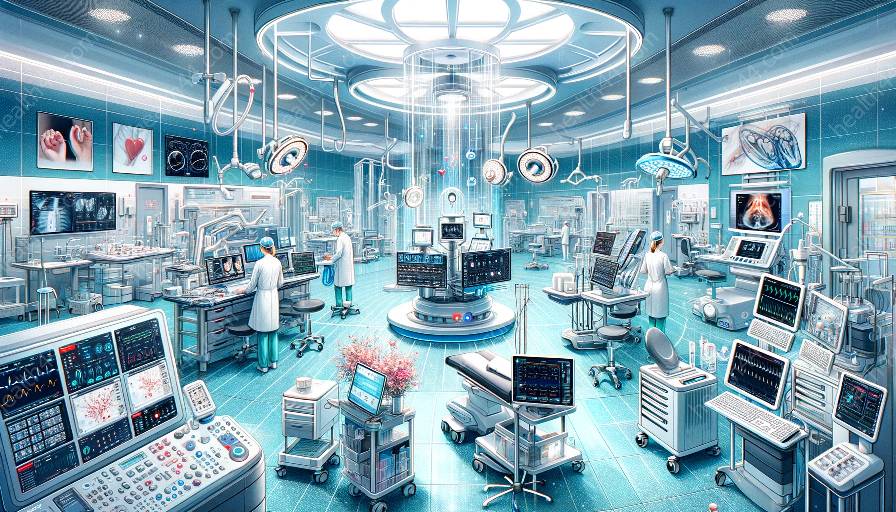Neurological rehabilitation is a critical aspect of healthcare that addresses the needs of individuals with neurological disorders. In recent years, significant advancements have been made in the design of medical devices for neurological rehabilitation, with a strong focus on biomechanics. Understanding the biomechanical challenges in designing these devices is vital for developing effective solutions that contribute to improved patient outcomes and quality of life.
The Role of Biomechanics in Neurological Rehabilitation
Biomechanics plays a crucial role in the design of medical devices for neurological rehabilitation. It involves the study of the mechanical aspects of biological systems, including the analysis of movement, forces, and the interactions between the body and external devices. In the context of neurological rehabilitation, biomechanics helps in understanding the limitations and capabilities of the human body, providing insights into how medical devices can be optimized to facilitate rehabilitation.
Biomechanical Challenges
Designing medical devices for neurological rehabilitation presents several biomechanical challenges that must be addressed to ensure the effectiveness and safety of these devices. Some of the key challenges include:
- Adaptability to Patient-Specific Needs: Neurological conditions vary from person to person, requiring medical devices to be adaptable and customizable to address individual needs. Biomechanical considerations play a critical role in ensuring that the devices can accommodate varying levels of impairment and movement patterns.
- Motion Analysis and Control: Understanding and analyzing the movement patterns of individuals with neurological disorders is essential for the design of effective rehabilitation devices. Biomechanics enables the study of gait analysis, muscle activity, and joint mechanics, providing valuable data for developing devices that can facilitate precise motion control and rehabilitation exercises.
- Interface and Comfort: The interaction between the body and medical devices is a key consideration in their design. Biomechanical principles help in optimizing the interface between devices and the human body, ensuring comfort, stability, and safety during rehabilitation activities.
- Force and Load Management: Managing forces and loads during rehabilitation exercises is crucial to prevent injury and promote efficient movement patterns. Biomechanical analysis aids in determining the optimal force transmission and loading conditions for medical devices, contributing to the safe and effective implementation of rehabilitation protocols.
Technological Advancements in Addressing Biomechanical Challenges
Recent advancements in technology have significantly influenced the design of medical devices for neurological rehabilitation, addressing several biomechanical challenges. These advancements include:
- Robot-Assisted Rehabilitation: Robotic devices have been developed to provide precise and controlled assistance during rehabilitation exercises, addressing the challenge of motion analysis and control. These devices incorporate sophisticated biomechanical principles to deliver tailored rehabilitation protocols based on individual needs.
- Wearable Sensors and Feedback Systems: Technological innovations have led to the integration of wearable sensors and feedback systems in rehabilitation devices. Biomechanical data obtained from these sensors enable real-time analysis of movement patterns, allowing for personalized feedback and adjustments to optimize rehabilitation outcomes.
- Customizable Interfaces and Ergonomic Designs: Advances in materials and manufacturing techniques have facilitated the development of customizable interfaces and ergonomic designs for rehabilitation devices. Biomechanical considerations are essential in ensuring that these interfaces adapt to the varying needs of patients while providing comfort and stability.
- Simulation and Modeling Tools: Simulation and modeling tools based on biomechanical principles have enabled the virtual testing and optimization of medical devices for neurological rehabilitation. These tools contribute to the efficient iteration and refinement of device designs, addressing challenges related to force and load management.
Conclusion
Biomechanical challenges in the design of medical devices for neurological rehabilitation require a comprehensive understanding of the biomechanics of human movement and the complexities of neurological conditions. By integrating biomechanical principles with technological advancements, innovative solutions can be developed to address these challenges and enhance the effectiveness of rehabilitation interventions, ultimately improving the quality of life for individuals with neurological disorders.


